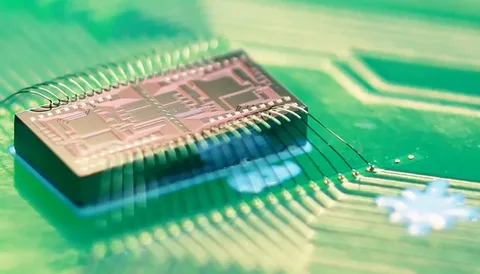Integrated circuits (ICs) are the backbone of modern electronics, powering everything from smartphones to aerospace systems. As technology continues to evolve, engineers are often faced with choosing between two primary types of ICs: hybrid integrated circuit and monolithic integrated circuit designs. Each type offers unique advantages, depending on the application and design requirements. Understanding their differences is essential for selecting the right solution.
1. Structure and Composition
The most notable distinction lies in how each circuit is constructed. A monolithic integrated circuit is fabricated on a single silicon chip. All components—transistors, resistors, capacitors—are manufactured together through a unified semiconductor process.
In contrast, a hybrid integrated circuit uses a combination of different semiconductor devices and passive components mounted on a ceramic or insulating substrate. These components may come from different manufacturing batches and are assembled individually, allowing for greater flexibility in design and material selection.
2. Design Flexibility and Customization
Monolithic ICs are limited by the constraints of the semiconductor wafer. This often restricts the designer’s ability to use specialized materials or tailor the design for unconventional environments.
Hybrid ICs offer enhanced design flexibility. Because components are mounted separately, designers can integrate diverse technologies (such as GaAs, SiGe, or MEMS) on a single substrate. This allows hybrid solutions to be customized for high-frequency, high-power, or radiation-resistant applications where monolithic ICs may fall short.
3. Performance in Harsh Environments
For industries like aerospace, defense, or medical devices, performance under extreme conditions is a major concern. Hybrid ICs generally outperform their monolithic counterparts in such scenarios due to the use of robust substrates like ceramic, and the ability to select high-grade components individually. They also provide improved thermal management and can better withstand mechanical stress.
Monolithic ICs are more susceptible to thermal failure and radiation damage since all components are housed within a single silicon structure. However, they work well in consumer electronics and environments with stable operating conditions.
4. Manufacturing and Cost
Monolithic ICs are highly cost-effective for mass production. Their streamlined fabrication process makes them ideal for high-volume applications such as smartphones, laptops, and other consumer electronics.
Hybrid ICs, while offering superior customization and performance, are typically more expensive to produce. Their manual assembly and the use of specialized materials increase production time and cost. However, for low to mid-volume projects that require precise performance metrics, the benefits outweigh the expense.
5. Repair and Maintenance
If a monolithic IC fails, the entire chip must usually be replaced. Repairs are not feasible, making diagnostics more complex and costly over time. On the other hand, hybrid circuits allow easier identification and replacement of individual components, leading to lower maintenance costs and longer system lifespan in critical applications.
Final Thought
Choosing between a monolithic and a hybrid integrated circuit depends largely on the application’s specific requirements. For high-volume, cost-sensitive consumer products, monolithic ICs are a smart choice. But in high-performance, mission-critical systems, hybrid ICs offer unmatched durability, customization, and reliability.
At Hybrid-Tek, industry experts specialize in designing and manufacturing advanced hybrid circuits tailored for aerospace, defense, and medical applications. Their commitment to quality and innovation ensures every solution meets the most demanding performance standards.



